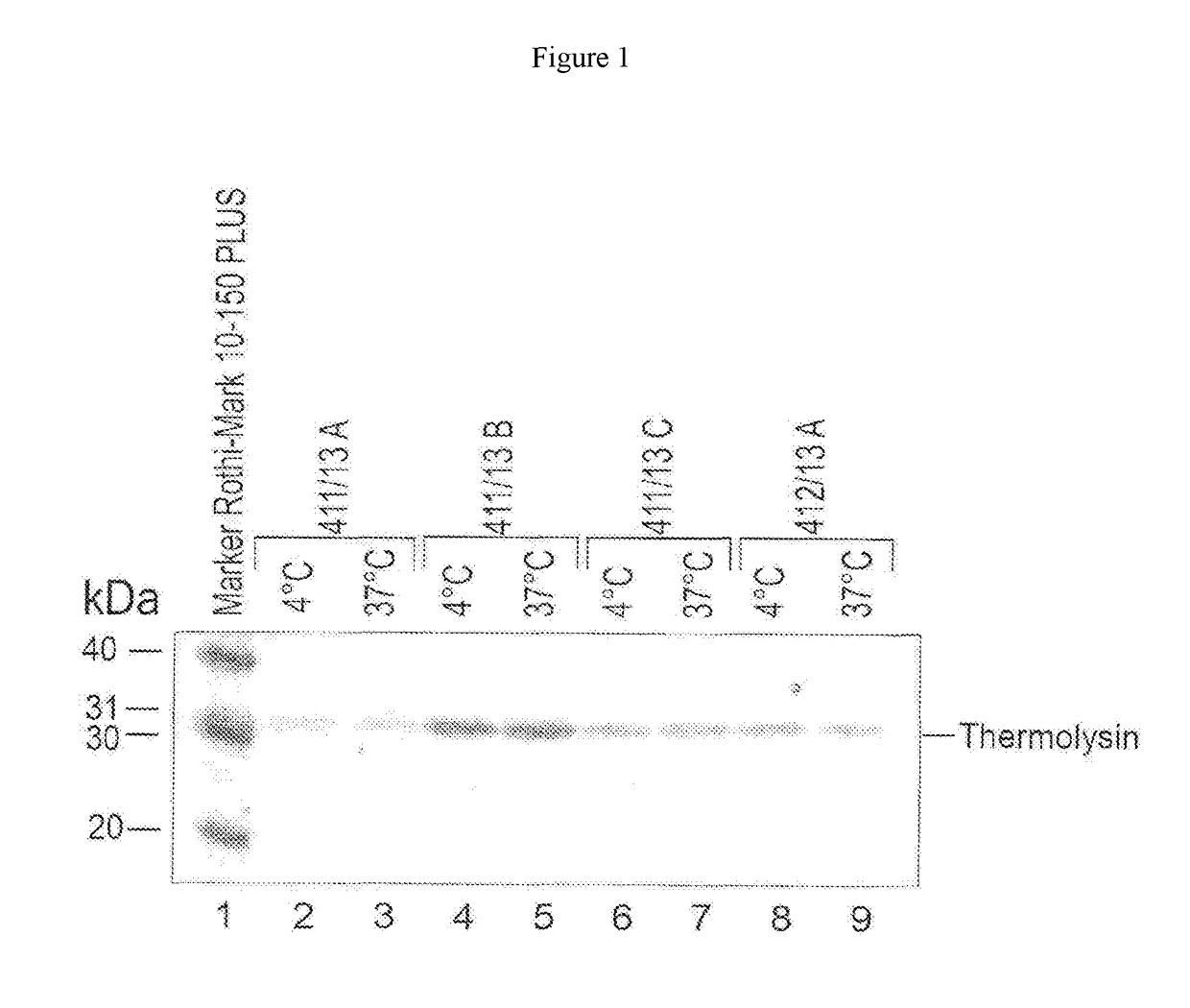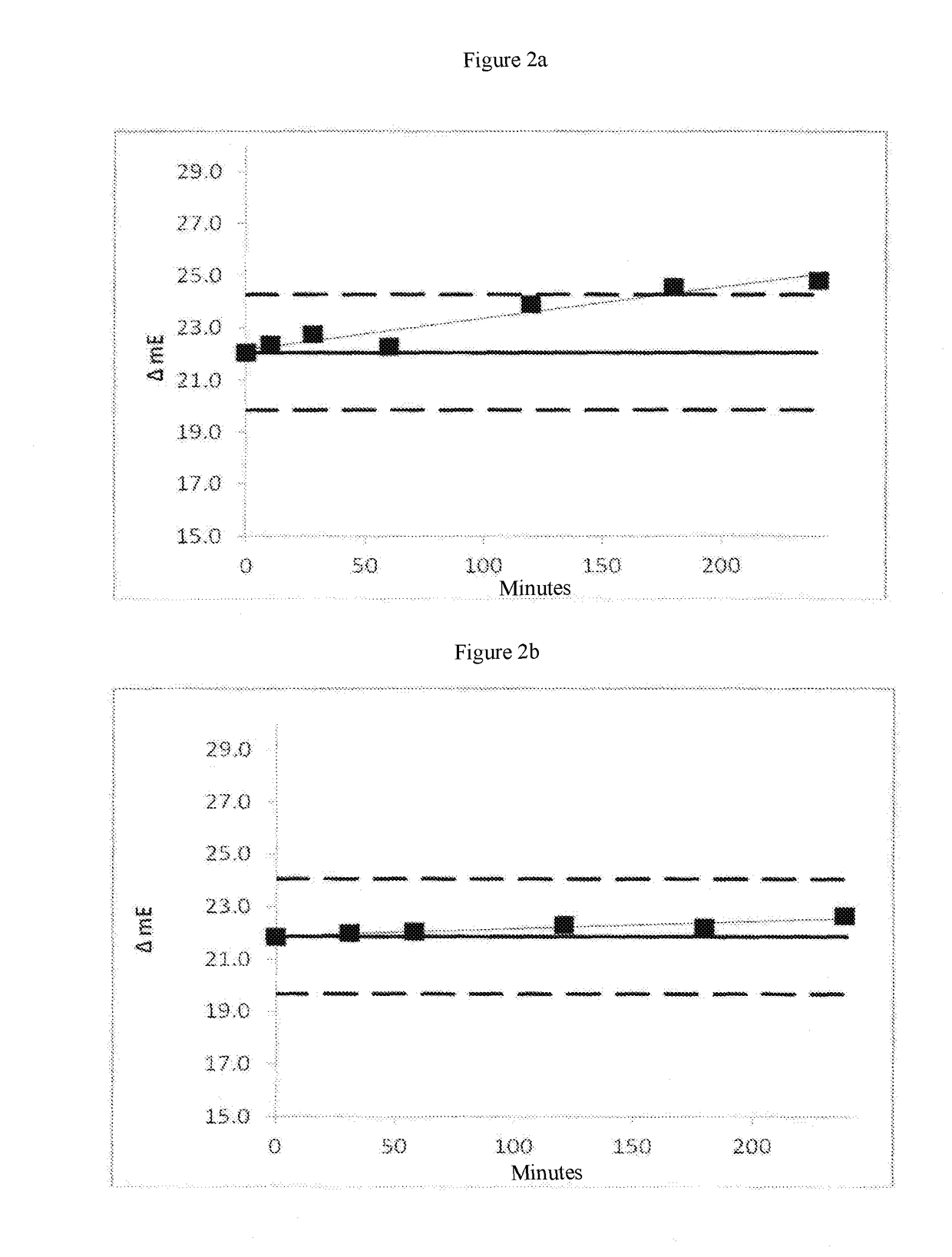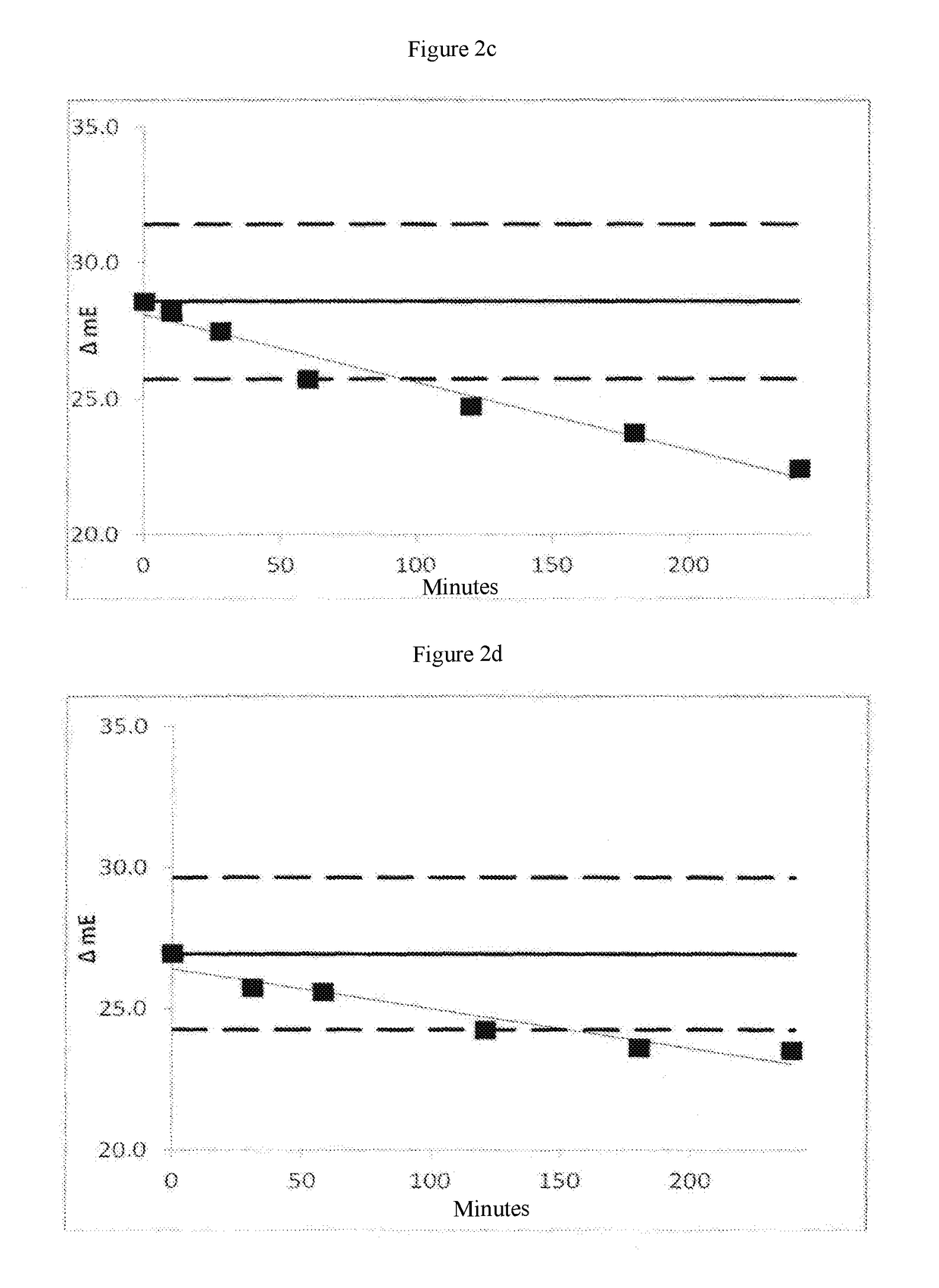Enzymatic determination of HbA1c
a technology of hba1c and enzyme, applied in the field of enzymatic determination of hba1c, can solve the problem of difficult resolution of the long-term stability of chemical and diagnostic reagents
- Summary
- Abstract
- Description
- Claims
- Application Information
AI Technical Summary
Benefits of technology
Problems solved by technology
Method used
Image
Examples
examples
1. Stabilisation of the Protease
[0099]a) Stabilisation of the Protease, Analysis by SDS Gel Electrophoresis:
[0100]The protease thermolysin, upon storage in liquid form or in reagents over time at 2 to 8° C. or higher temperatures has a strong tendency to break down autoproteolytically. That is a bar to the use of the protease for liquidly stable reagents with a uniform quality requirement over prolonged periods of time. The protease thermolysin is Zn2+ dependent and the inventors were able to show that the one protease inactivation by means of chelators with at the same time Ca2+-dependent structural stabilisation permits better use of thermolysin and related metalloproteases for clinical-chemical diagnostics.
[0101]To prove the possible stabilisation of a protease different respective amounts or ratios of chelator and Ca2+ were introduced into a reagent base matrix in which the protease thermolysin was contained. The concentrations of EDTA and calcium, used in that case in the reage...
PUM
| Property | Measurement | Unit |
|---|---|---|
| molar ratio | aaaaa | aaaaa |
| temperatures | aaaaa | aaaaa |
| width | aaaaa | aaaaa |
Abstract
Description
Claims
Application Information
 Login to View More
Login to View More - R&D
- Intellectual Property
- Life Sciences
- Materials
- Tech Scout
- Unparalleled Data Quality
- Higher Quality Content
- 60% Fewer Hallucinations
Browse by: Latest US Patents, China's latest patents, Technical Efficacy Thesaurus, Application Domain, Technology Topic, Popular Technical Reports.
© 2025 PatSnap. All rights reserved.Legal|Privacy policy|Modern Slavery Act Transparency Statement|Sitemap|About US| Contact US: help@patsnap.com



